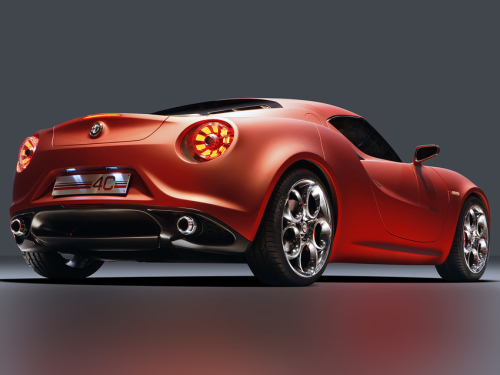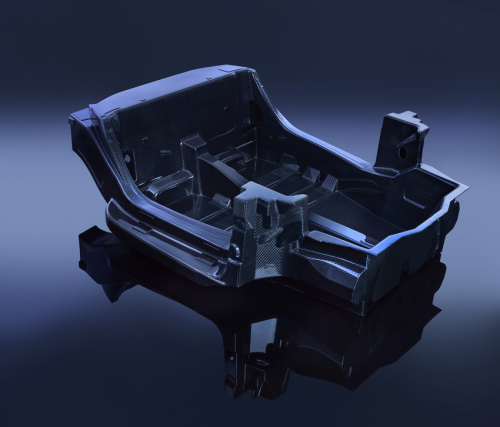

Under the agreement, E700 series carbon fibre prepreg from the TenCate Advanced Composites manufacturing facility in Langley Mill, Nottingham, UK, will be used by the Adler Group in Naples, Italy, to manufacture the monocoque. (The Nothingham site was previously part of prepreg manufacturer Amber Composites, which was acquired by TenCate in early 2013.)
The 4C is produced in Modena, Italy. A maximum of 3500 cars will be produced a year, 1000 of which are destined to the European markets.
TenCate and Adler will invest in local production of the prepreg in order to optimise the supply process. They have also agreed to work together on other automotive projects.
An affordable supercar
The Alfa Romeo 4C, launched in late 2013, was designed to be an "affordable supercar." This required the company to look at "limited production volumes, but still in the order of some thousands vehicles per year."
To achieve the target 'supercar' weight/power ratio of less than 4 kg/horsepower (hp), Alfa Romeo designers chose to reduce the car's weight rather than increasing its horsepower.
The car's final total dry weight of just 895 kg was achieved using aluminium, steel, and composite materials (low-density sheet moulding compound (SMC) and carbon fibre composite).
Carbon fibre monocoque
Carbon fibre composite represents 25% of the 4C's overall volume. It was chosen for the monocoque that makes up the central, load-bearing cell of the chassis.
The one-piece carbon composite monocoque weighs just 65 kg.
The monocoque was designed by the Alfa Romeo team and manufactured by Adler using prepreg technology to assure a production of over 1000 parts per year.
SMC composite body
A low-density SMC was used for the body, resulting in a 20% weight reduction over sheet steel.
Alfa Romeo says the 4C is the first standard production car to employ such a high percentage of low-density SMC.
With a weight of 1.5 g/cm3 the SMC is much lighter than steel (~7.8 g/cm3) and aluminium (~2.7 g/cm3). It is also more malleable, which allowed for the styling freedom Alfa Romeo desired.
In addition, SMC, unlike aluminium, does not dent in the event of minor impacts, has high resistance to chemicals, and also disperses noise very well.
Low-density SMC also allows part integration, which reduces the number of components and leads to shorter assembly times, thus lowering production costs.
Lightweighting all over
Futher actions to reduce the 4C's weight included the use of aluminium for the roof reinforcement cage and the front and rear frameworks, and polyurethane (PUR-RIM) for the bumpers and wings.
Even the window glass was targeted. Alfa Romeo reports that all the window glasses are on average around 10% thinner than those normally fitted on cars, which results in an average weight reduction of 15%. The windscreen, for example, is only 4 mm thick.
